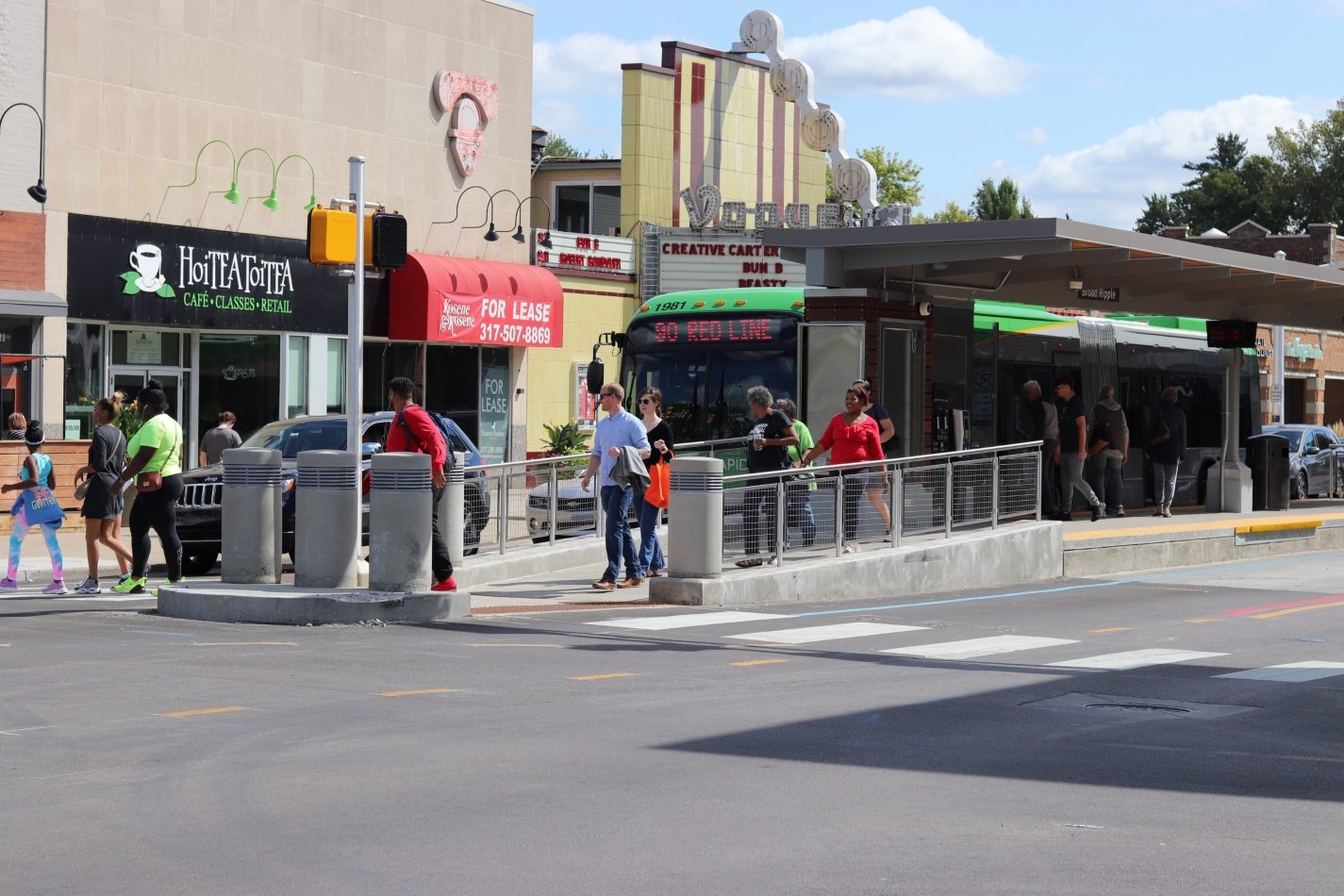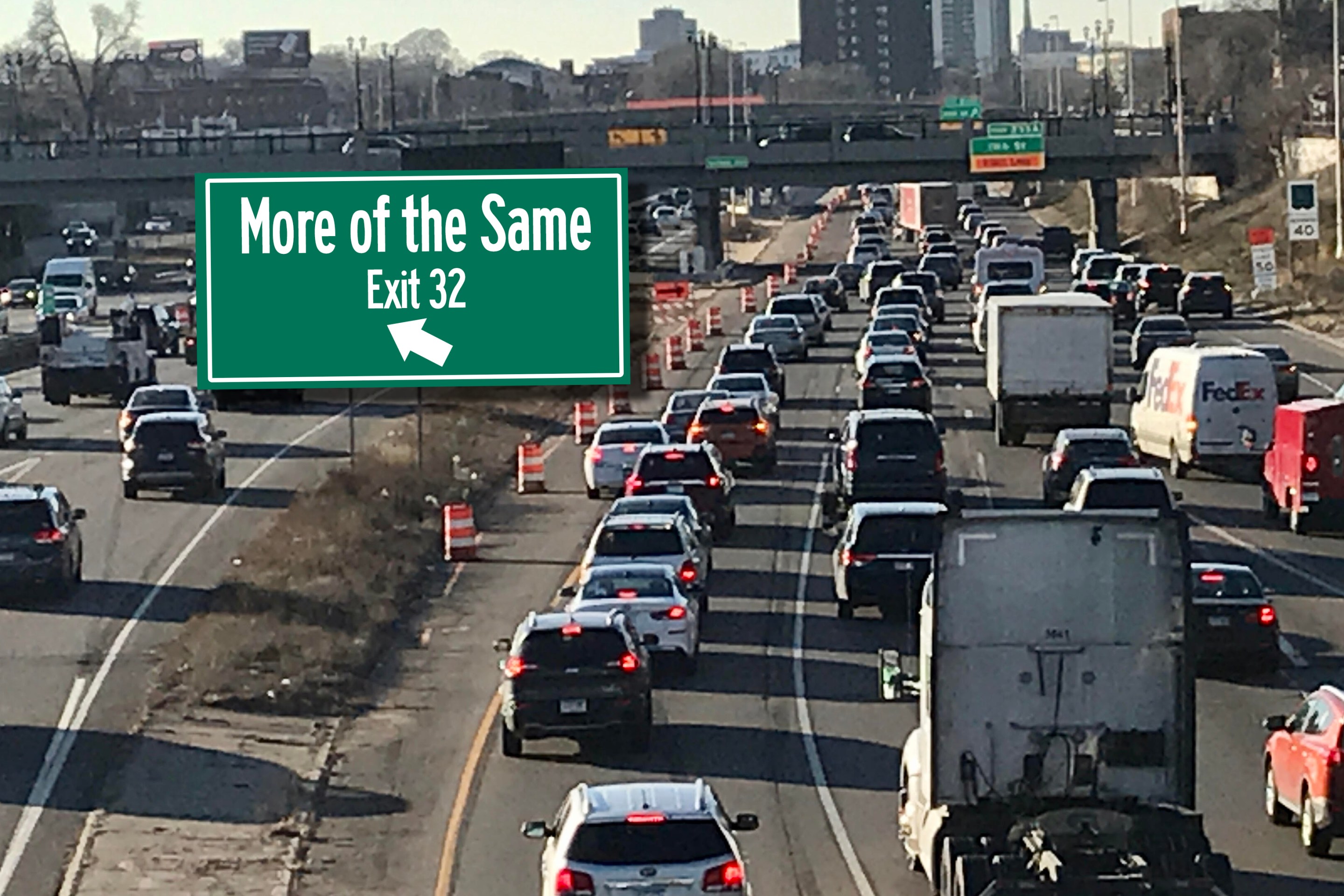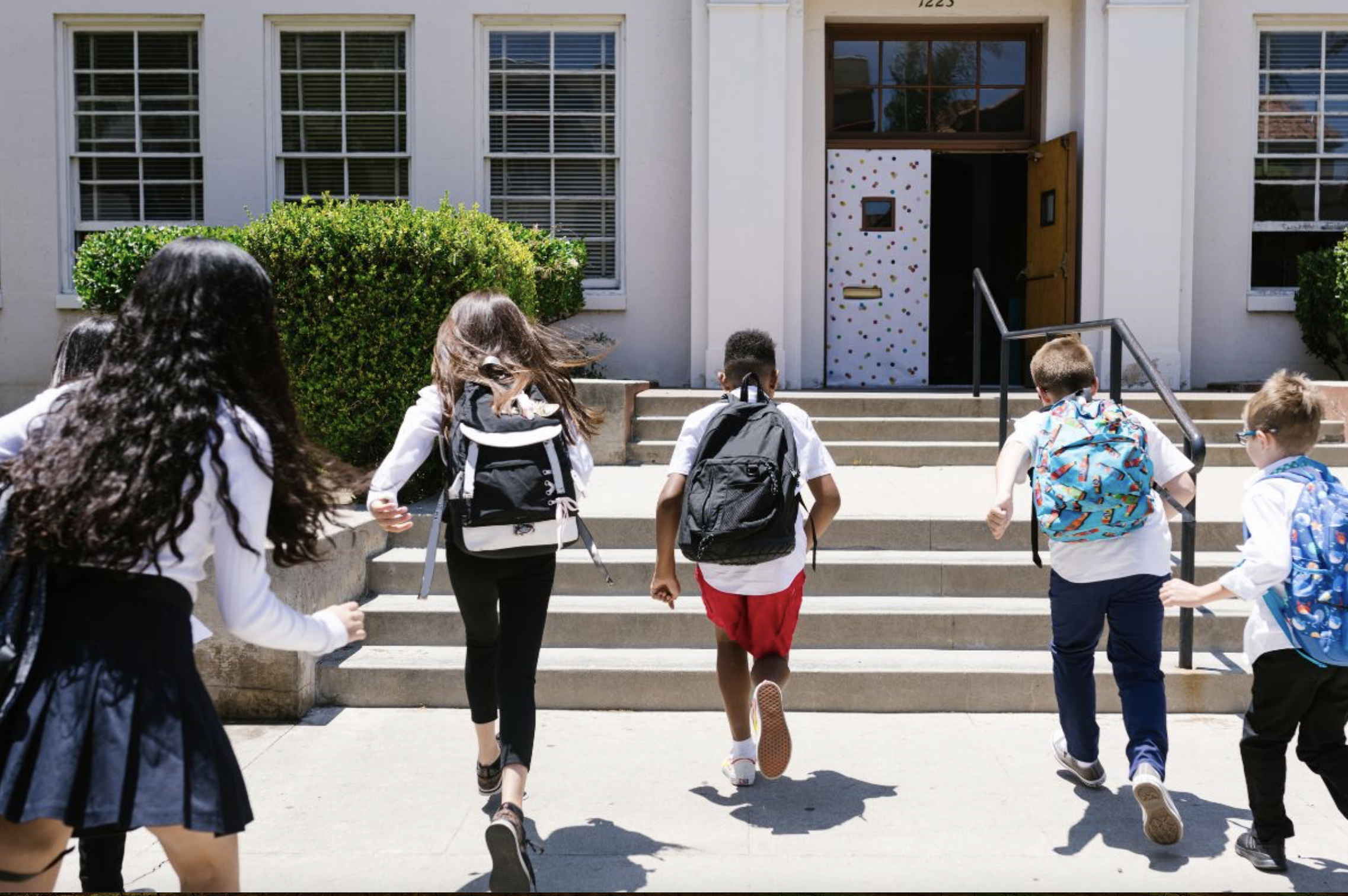Indianapolis residents were cheering as the city launched the Red Line, the first of three planned bus routes and the first fixed-route, high-frequency transit line established in two generations.
On Opening Day earlier this month, people woke up early in order to pack themselves onto the first few buses.
Vicki Mills, 66, and her husband, Mike, told the Indianapolis Star they were determined to be some of the first riders. They brought their bikes, the Star's Kellie Hwang reported, because they wanted to learn how the bus's two interior bike racks worked.
The $96.3 million, 13-mile project was funded after Marion County voters approved in a quarter-percent sale tax hike for transit in 2016. Now that the first line is operational, Indianapolis residents are getting their first taste of a high-quality transit line. And they are excited.
Mass Transit is NOT a DRAG!
— C Todd Creations Photography LLC (@ctoddcreations) September 1, 2019
We are celebrating the opening of the new Red Line with glamor, style & grace! #IndyRedLine #OnBoardIndy #indianapolis #fountainsquare #317 #circlecity #DowntownIndy #VisitIndy pic.twitter.com/8WrL6h6oeS
Indianapolis leaders have pushed forward a vision for better regional transit for a decade. Their efforts survived an assassination attempt by the GOP statehouse in 2014.
The Red Line is only the first of three bus rapid transit lines planned to span Marion County. The Purple Line and Blue Line are expected to open in 2022 and 2025, respectively.
By the time the region's transit service makes all three lines operational and completes a systemwide bus-network redesign (expected next June), service will have increased by about 70 percent, said Jerome Horne, a spokesperson for Indygo, the regional transit agency.
Local leadership celebrated.
"In the time it took to cut a ribbon, Indianapolis became a different city," Anna Gremling, executive director of the Indianapolis Metropolitan Planning Organization.
Indianapolis has a very low base of transit ridership. Only about 2 percent of the city's workers were commuting by public transit in 2016, when the measure to fund the new bus services passed. By comparison, about 8 percent of workers ride transit in nearby Cincinnati and 18 percent in Pittsburgh.
"This is definitely a big step up," said Horne. "Before we started this referendum process … we ranked like 86th out of the top 100 cities in the country in terms of transit revenue hours per capita."
Horne said the full potential of the Red Line may not be realized until after the bus network redesign is complete in June. Ridership numbers for the first week varied from 5,000 to 10,000 daily.
Long term, the region hopes to have 11,000 daily riders on the line. Ridership on the Red Line cost nothing until the end of September.
But the number of new riders the system saw was still inspiring, Horne said.
"This project has been a great unifier," he said. "Seeing people from all walks of life together in one space in Indianapolis is really cool."
Horne said the transit agency has had some issues with bus bunching and meeting the 10 minute headways. The Red Line offers 10 minute frequencies 14 hours a day and 20-minute frequencies for another six hours. The 13-mile route runs are partly dedicated lanes, including a portion that has a single, bi-directional dedicated lane.






